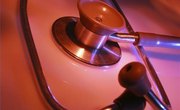Imagine being unable to verbally respond to a verbal greeting. Thinking about the ability to speak as an important part of your day may not cross your mind. If that speech ability was taken away, you might find yourself unable to communicate not only basic speech but also emotional responses like fear, confusion or anxiety. Although you may not give your speech organs much thought, they are integrally tied to how you function. From the lungs to the mouth, the organs of speech and their function in sound production and speech play important roles in many aspects of your life.
Breathing and Speaking Connections
Looking at the speech mechanism and organs of speech begins with the vital lungs. The lungs are located in the chest cavity and expand and contract to push air out of the mouth. Simple airflow is not enough to produce speech. The airflow must be modified by other speech organs to be more than just respiration. When you exhale, air moves out of your lungs through your windpipe or trachea. At the top of the trachea is one of the other primary organs of speech: the larynx or voice box.
Vibrations of the Larynx
Three more parts of the speech mechanism and organs of speech are the larynx, epiglottis and vocal folds. The larynx is covered by a flap of skin called the epiglottis. The epiglottis blocks the trachea to keep food from going into your lungs when you swallow. Across the larynx are two thin bands of tissue called the vocal folds or vocal cords. Depending on how the folds are positioned, air coming through the trachea makes them vibrate and buzz. These vibrations are called a "voiced" or soft sound. Placing finger tips over the Adam's apple or larynx at the front of your neck while humming makes it possible to feel the vocal fold vibration.
Articulators of Speech
The inside of your mouth is also called the oral cavity and controls the shape of words. At the back of the oral cavity on the roof of the mouth is the soft palate or velum. When you pronounce oral sounds, such as "cat" or "bag," the velum is located in the up position to block air flow through the nasal cavity. When you pronounce nasal sounds, such as "can" or "mat," the velum drops down to allow air to pass through the nasal cavity. In front of the velum is the hard palate. Your tongue presses or taps against the hard palate when you pronounce certain words, such as "tiptoe." Developmental or physical issues related to speech organs that are articulators of speech can result in a need for speech therapy.
Teeth, Tongue and Lips
Say "Thank you." Feel how your tongue presses against the inside of your front teeth. The convex area directly behind your teeth is known as the teeth ridge. For the purpose of linguistics, the tongue is divided into three regions: the blade, front and back. The tip of the tongue, which touches the teeth ridge, is called the blade. The middle of the tongue, which lines up with the hard palate, is called the front of the tongue. Finally, beneath the soft palate is the back of the tongue. The final speech organ is the most visible and obvious: the lips. Your lips influence the shape of the sounds leaving the oral cavity. Each of these organs of speech and their definitions is important to the process of speech, articulation and expressions through sounds.
Related Articles
References
Writer Bio
Carolyn Robbins began writing in 2006. Her work appears on various websites and covers various topics including neuroscience, physiology, nutrition and fitness. Robbins graduated with a bachelor of science degree in biology and theology from Saint Vincent College.











